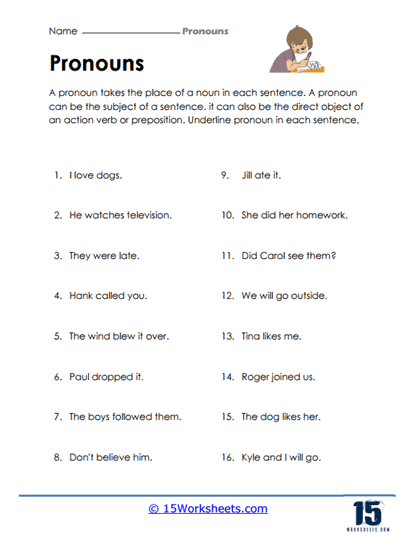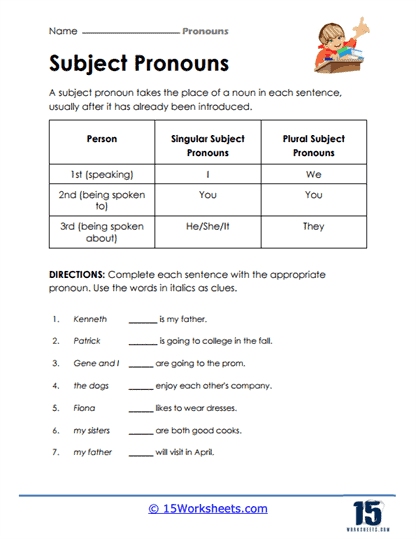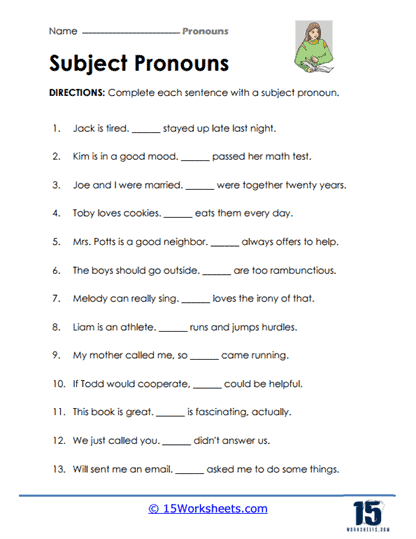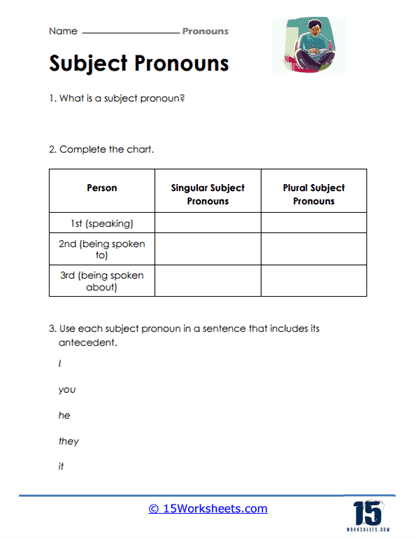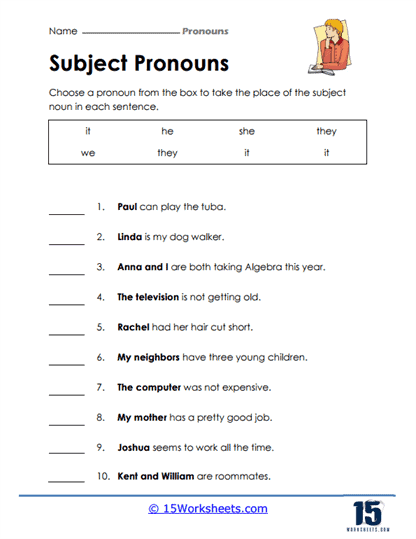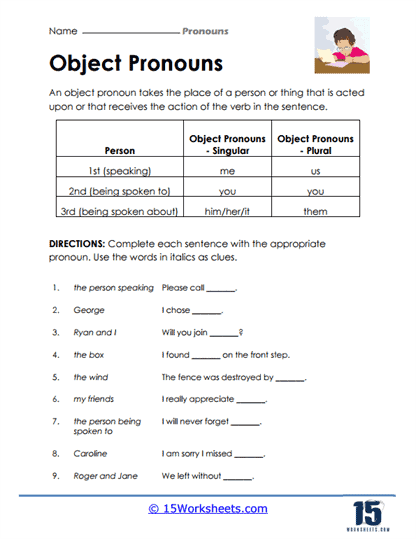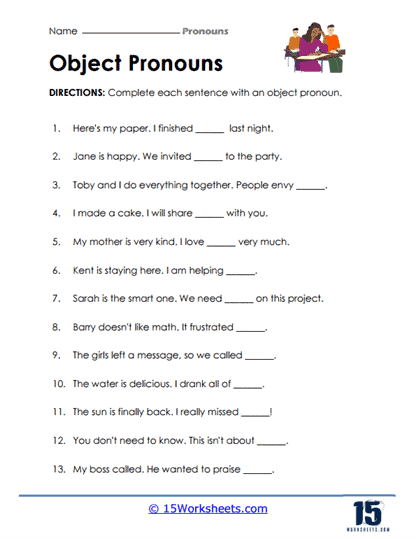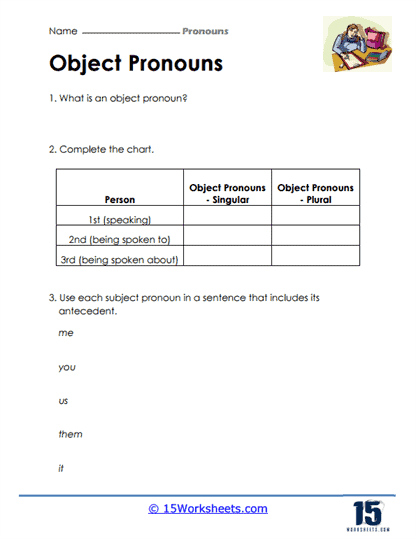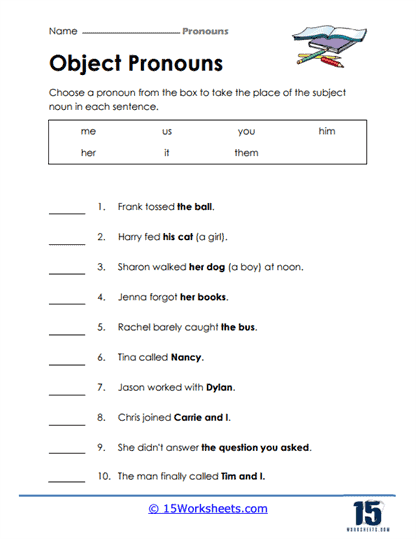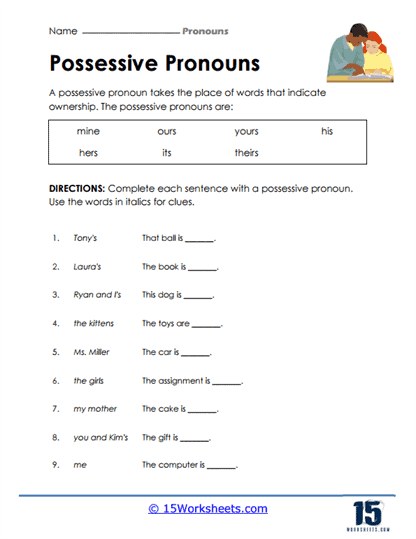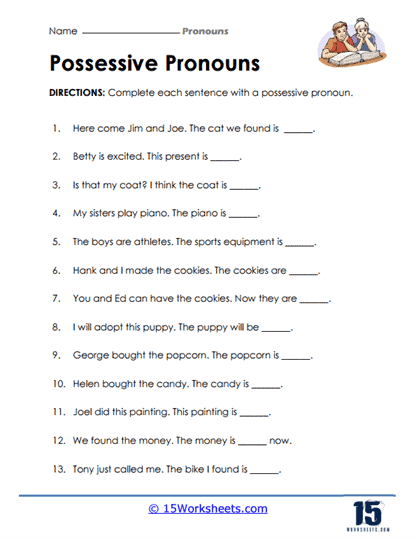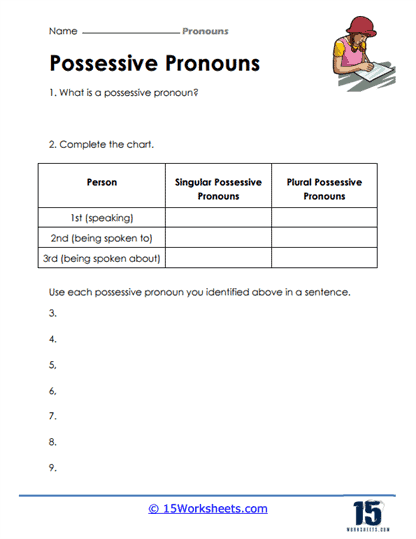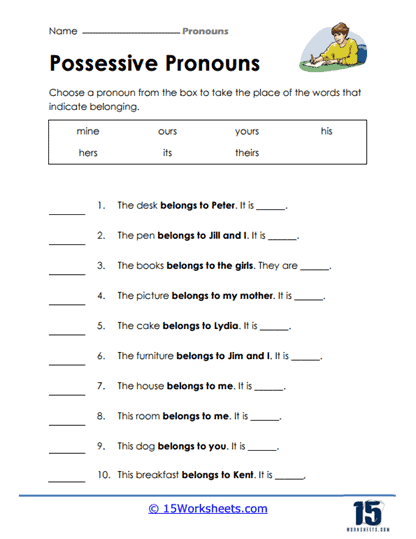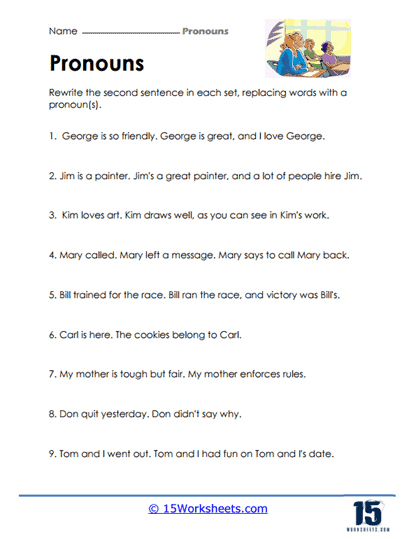Pronouns Worksheets
All About These 15 Worksheets
This collection of pronouns worksheets are a helpful tool for teaching and reinforcing this important aspect of English grammar. Pronouns are words that take the place of nouns in a sentence, such as “he,” “she,” “it,” “they,” and “we.”
These worksheets include examples and exercises to help students identify different types of pronouns and use them correctly. They also include a variety of activities such as filling in the blanks with the correct pronoun, rewriting sentences to include pronouns, identifying the antecedent of a pronoun in sentences, and more. Through these, worksheets, students will:
- Identify pronouns and their antecedents in sentences;
- Distinguish subject pronouns from object pronouns;
- Understand the form and function of possessive pronouns;
- And write their own sentences using various pronouns correctly.
By completing these worksheets, students can develop a better understanding of how pronouns work and how they can be used to avoid repetition and add variety to sentences. This can help them improve their writing and communication skills, as well as their reading comprehension.
Different types of pronouns
Pronouns are words that take the place of nouns in a sentence. They are used to avoid repetition and make sentences more concise. Here are some common types of pronouns:
- Antecedents – An antecedent is the noun or pronoun that a pronoun replaces in a sentence. For example, in the sentence “John went to the store, and he bought some milk,” “John” is the antecedent of “he.”
- Subject pronouns – Subject pronouns are used as the subject of a sentence. For example, “I,” “you,” “he,” “she,” “it,” “we,” and “they” are subject pronouns.
- Object pronouns – Object pronouns are used as the object of a verb or preposition. For example, “me,” “you,” “him,” “her,” “it,” “us,” and “them” are object pronouns.
- Possessive pronouns – Possessive pronouns show ownership or possession. For example, “mine,” “yours,” “his,” “hers,” “its,” “ours,” and “theirs” are possessive pronouns.
Here are some examples of these pronouns in sentences:
- Antecedent – “John went to the store, and he bought some milk.”
- Subject pronouns – “I went to the store.” “She is a doctor.” “They are my friends.”
- Object pronouns – “He gave it to me.” “We are going with them.” “She loves him.”
- Possessive pronouns – “This book is mine.” “Is this yours?” “Theirs is the blue car.”
By understanding the different types of pronouns and their uses, students can improve their writing and communication skills and avoid common errors in pronoun usage.

